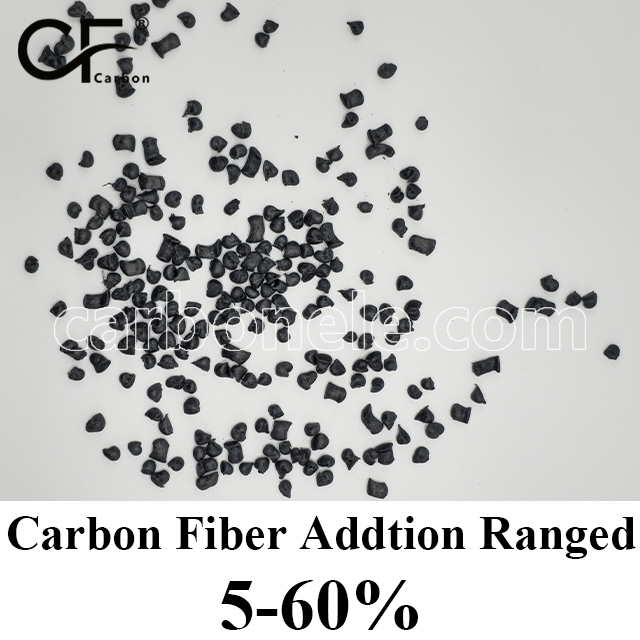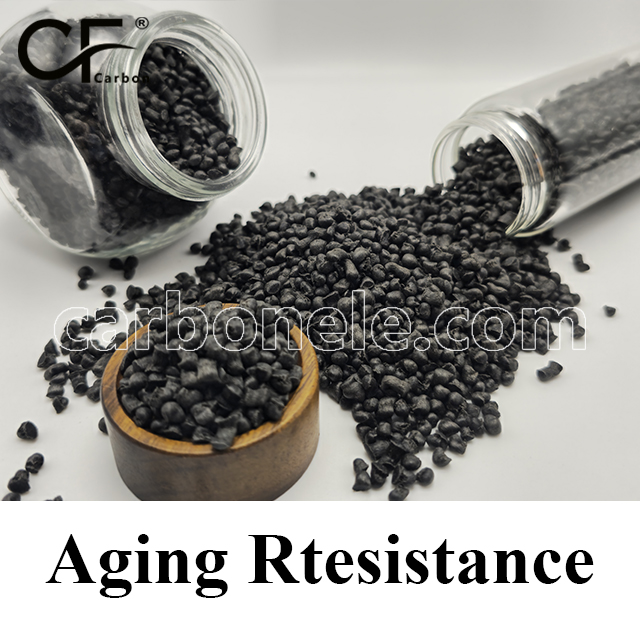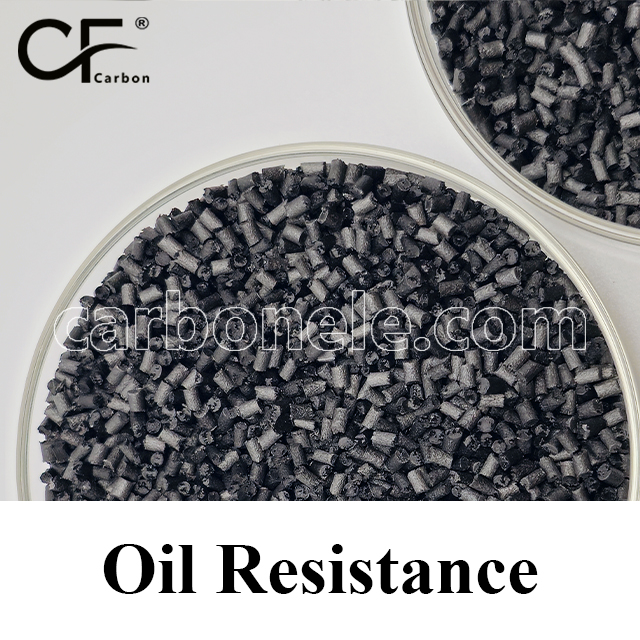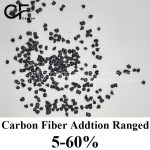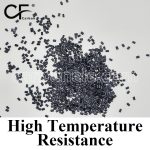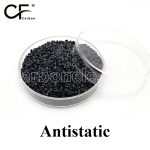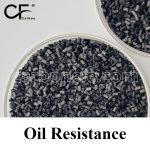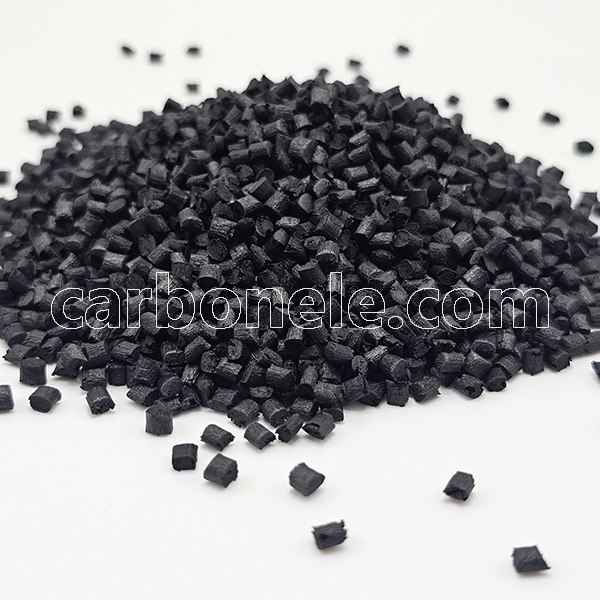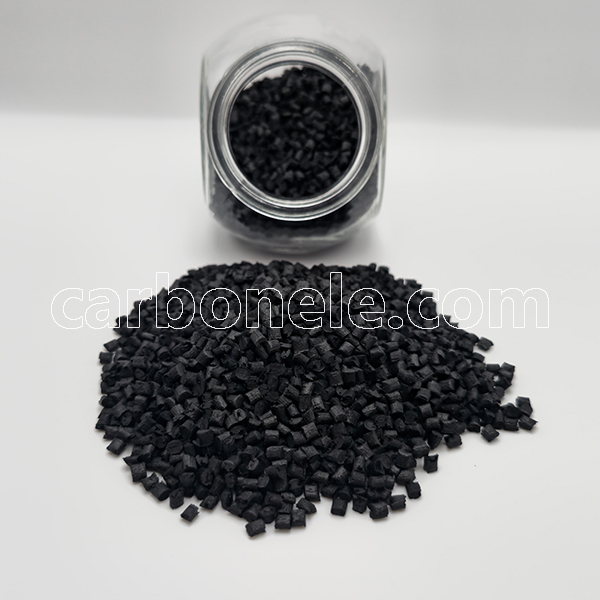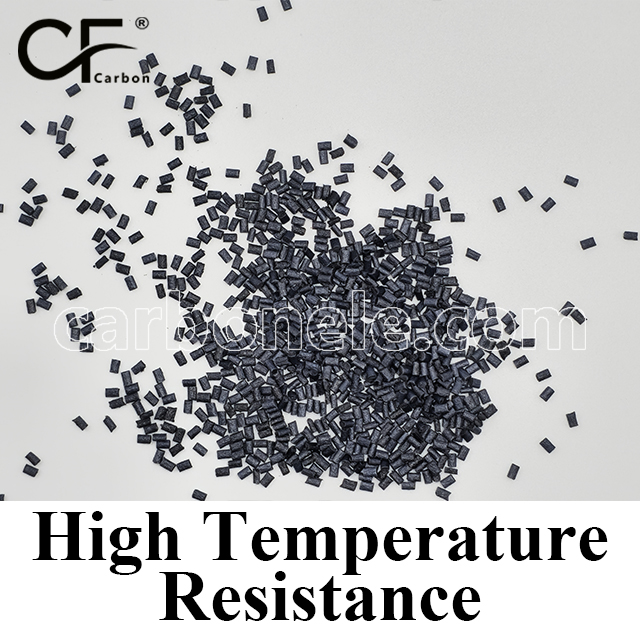
PA12-CF5 high-performance engineering applications
- Model number: PA12-CF-BCA05
- Matrix Resin: Polyamide12 (Nylon12) (PA12)
- Reinforcing Filler: Carbon fiber
- Appearance: Granules
- Grade: Injection/extrusion grade
- Packaging: 25kgs/bag
PA12-CF5 | 5% Carbon Fiber Reinforced Polyamide 12
PA12-CF5 is an advanced engineering thermoplastic that combines the flexibility and chemical resistance of Polyamide 12 (PA12) with the mechanical enhancement of 5% carbon fiber reinforcement. This composite delivers a unique balance of strength, stiffness, toughness, and environmental resistance, making it a reliable choice for high performance applications across industries such as automotive, aerospace, machinery, electronics, and consumer products.
The addition of carbon fiber introduces a fine reinforcement network within the polymer matrix, effectively improving the load bearing capacity and dimensional stability while keeping the material lightweight and easy to process. This makes PA12-CF5 an ideal substitute for metal or heavier plastics in semi structural or functional components.
Key Material Benefits
Mechanical Reinforcement
Carbon Fiber Content: 5%
Fine carbon fibers are uniformly distributed to enhance rigidity and dimensional control without significantly increasing brittleness or processing difficulty.
Tensile Strength: ≥ 70 MPa
Allows the material to endure high pulling forces, maintaining integrity under static or cyclic loads.
Flexural Strength: ≥ 100 MPa
Ensures resistance to bending and deformation—vital for housings, covers, and brackets that endure mechanical stress.
Impact Strength: ≥ 8 kJ/m²
Offers excellent resistance to sudden shocks or impacts, reducing the risk of crack propagation or failure in dynamic environments.
Thermal Stability
Heat Deflection Temperature (HDT): ~160°C
Retains shape and mechanical properties under elevated temperatures—ideal for automotive under hood or near engine uses.
Continuous Service Temperature: Up to 80°C
Suitable for long term exposure in moderate to high temperature environments, including machinery and electrical equipment.
Environmental and Chemical Resistance
Low Moisture Absorption
Unlike many polyamides, PA12 naturally absorbs little water. With added carbon fiber, PA12-CF5 offers exceptional dimensional stability, even in humid or wet conditions.
Chemical Compatibility
Exhibits excellent resistance to:
Automotive fluids (oil, grease, fuel)
Industrial solvents
Mild acids and alkalis
This makes it suitable for chemically aggressive settings such as engine bays, fuel system parts, and industrial enclosures.
Processing and Production
Processing Methods:
Compatible with injection molding and extrusion, allowing cost effective and scalable production of complex parts with high repeatability.
Flow Behavior:
Despite the fiber content, PA12-CF5 maintains good flowability, supporting thin wall designs and detailed part geometries.
Tooling Considerations:
Requires standard abrasion resistant tooling. Optimal results are achieved with uniform melt temperatures and controlled shear to minimize fiber breakage.
Key Applications Across Industries
Automotive
Lightweight dashboards and trim components
Engine bay brackets and housings
Fuel system connectors and electrical enclosures
→ Reduces overall vehicle weight while maintaining durability and thermal resistance.
Aerospace
Lightweight, fatigue resistant brackets and covers
Enclosures for flight critical systems
→ Combines strength with weight savings for aerospace efficiency.
Industrial Machinery
Precision gears, bearings, and bushings
Conveyor guides, rollers, and wear parts
→ Withstands friction and load in dynamic mechanical assemblies.
Consumer & Sports Equipment
High performance bicycle components
Ski bindings, helmet shells, and structural elements
→ Delivers safety, strength, and low weight in sports design.
Electronics & Electrical
Structural frames for rugged electronics
Durable device enclosures with heat and chemical resistance
→ Ideal for automotive electronics, outdoor gear, and power tools.
Performance Summary Table
| Property | Value / Description |
|---|---|
| Carbon Fiber Content | 5% (Short Carbon Fiber) |
| Tensile Strength | ≥ 70 MPa |
| Flexural Strength | ≥ 100 MPa |
| Notched Impact Strength | ≥ 8 kJ/m² |
| Heat Deflection Temperature | Approx. 160°C |
| Long Term Service Temperature | Up to 80°C |
| Water Absorption | Low – improved over standard PA12 |
| Chemical Resistance | Excellent – fuels, oils, solvents |
| Wear Resistance | High – supports sliding/friction parts |
| Processing Methods | Injection molding, extrusion |
| Surface Finish | Good – smooth surface with minimal warpage |
| Dimensional Stability | Excellent – low shrinkage and water uptake |
If you want to get more information about PA12-CF5, you can vist our Youtube.
Thermal Stability of PA12-CF
PA12-CF composites exhibit significantly enhanced thermal stability compared to standard PA12 due to the incorporation of carbon fiber. As the carbon fiber content increases, the material's ability to withstand elevated temperatures improves, allowing it to maintain mechanical properties in high-temperature environments. This enhanced heat deflection temperature makes PA12-CF suitable for applications that require reliable performance under thermal stress. The superior thermal stability ensures that components made from PA12-CF can operate effectively in demanding conditions, thereby expanding their usability across various industries, including automotive and aerospace. The combination of lightweight characteristics and improved heat resistance positions PA12-CF as an excellent choice for applications that prioritize both strength and thermal performance.
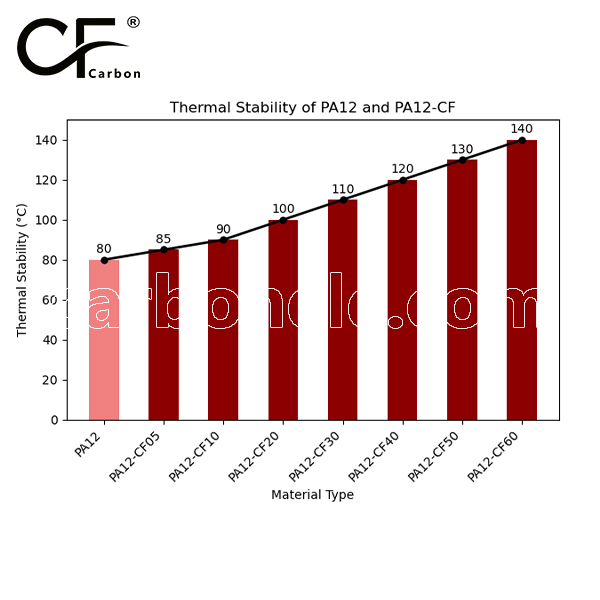
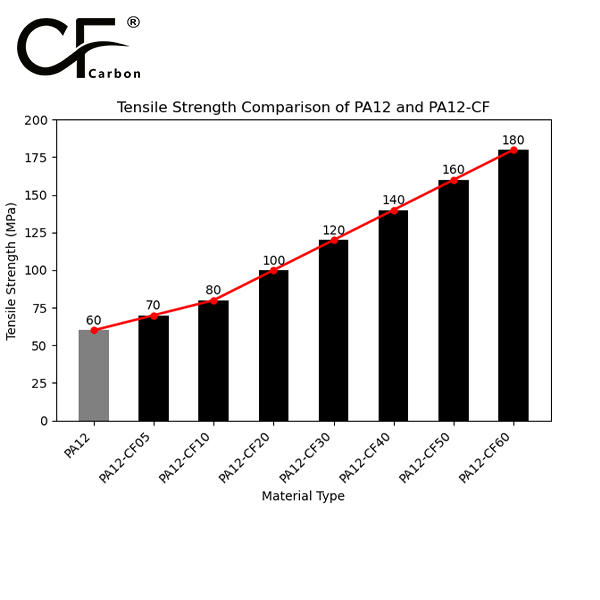

Frequently Asked Questions
Carbon (Xiamen) New Material Co., Ltd. aims to provide buyers with "one-stop" worry-free high-quality services. Here you can find all information about carbon fiber engineering plastics. If you still have questions, please send us an email for consultation!
-
How can I contact the manufacturer of a product that interests me?
When you find a product you are interested in, you can contact the manufacturer directly by sending an email and we will get back to you as soon as possible.
-
How do I find the products that interest me?
All you need to do is enter the keyword, product name in the search window and press the Enter key on your keyboard. Your search results page will then be displayed. You can also search within the product category pages on the home page. Each category is divided into subcategories, allowing you to refine your search and find products that interest you.
-
Where will I find a buying guide?
Please contact our after-sales service directly and we will provide you with a comprehensive operating guide.
-
What are CF Reinforced Thermoplastic Composites?
CF Reinforced Thermoplastic Composites are materials where carbon fibers are incorporated into a thermoplastic matrix. They combine the strength and stiffness of carbon fibers with the processability and recyclability of thermoplastics. For instance, they are used in automotive parts like bumper beams.
-
What are the benefits of CF Reinforced Thermoplastic Composites over traditional composites?
The key benefits include faster production cycles, easier recyclability, and better impact resistance. They also offer design flexibility. An example is in the manufacturing of consumer electronics casings where complex shapes can be achieved more easily.
-
How are CF Reinforced Thermoplastic Composites processed?
Common processing methods include injection molding, extrusion, and compression molding. Injection molding is widely used for mass production. For example, in the production of small components for the medical industry.
-
What industries use CF Reinforced Thermoplastic Composites?
They are utilized in aerospace, automotive, medical, and sports equipment industries. In aerospace, they can be found in interior components. In the medical field, they might be used in prosthetics.
-
How does the carbon fiber content affect the properties of the composites?
Higher carbon fiber content generally leads to increased strength and stiffness but may reduce ductility. A moderate content is often balanced for specific applications. For example, a higher content might be preferred in structural parts of a race car.
-
What are the challenges in using CF Reinforced Thermoplastic Composites?
Challenges include higher material costs, complex processing equipment requirements, and ensuring uniform fiber dispersion. Issues with adhesion between the fibers and the matrix can also arise. An example is in achieving consistent quality in large-scale production.








